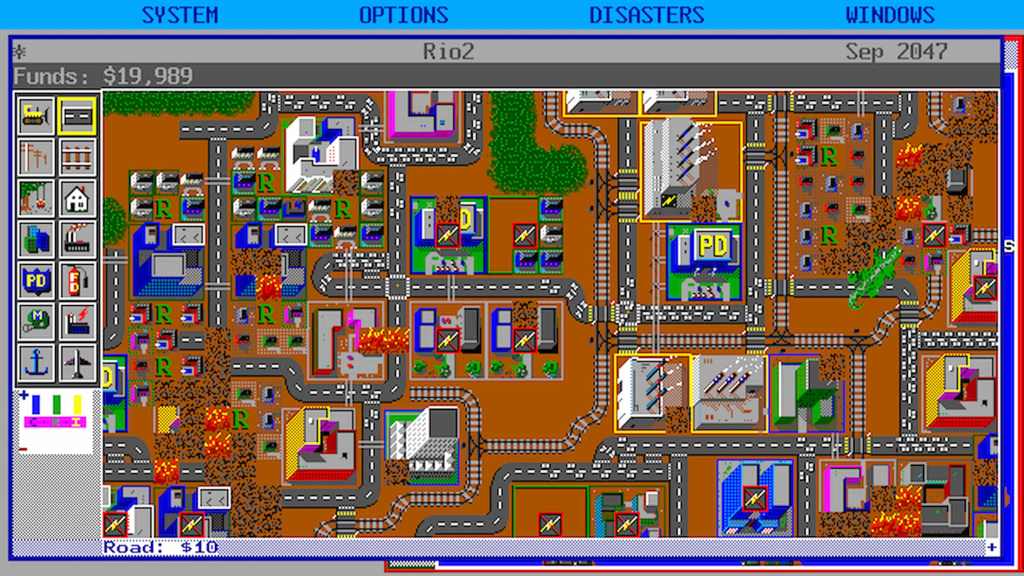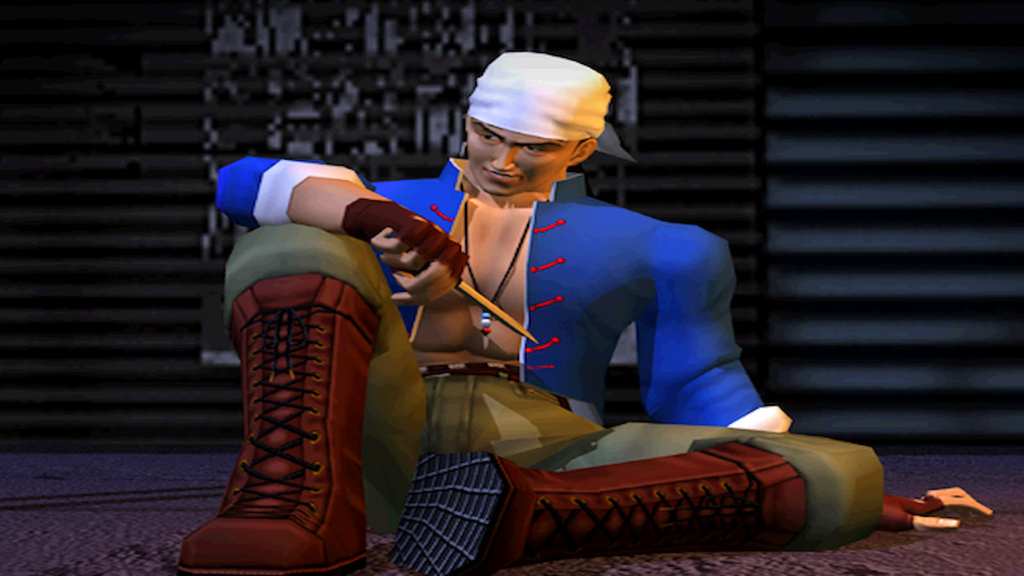In times past, some games hit differently because they did things you never imagined were possible in a video game. They made you stop mid-play and think, “Wow! I didn’t know that was possible,” whether it was a physics trick, a character reacting in a completely inconceivable way, or a world that felt alive with its own, never-before-seen rules. These titles made you rethink what a game could do and how it could feel. Often, the technology around them couldn’t keep up with the ideas, but the ambition still shone through, leaving an impression that stayed implanted in your skull for years on end.
Videos by ComicBook.com
The six games on this list changed expectations in ways that still resonate with how video games are designed in the industry. Some created entirely new experiences, while others reshaped familiar ones into something unexpected or unprecedented. Each one took risks that few developers were willing to take at the time, but, in doing so, left a mark that you can still see in modern gaming today. They proved that a bold vision could endure, even when execution was imperfect, and that innovation often came from daring to do what no one else thought possible.
6. Deus Ex (2000)

Deus Ex practically invented the idea of player choice in a way few games had ever tried before it. You could choose to sneak past guards, manipulate security systems, confront enemies head-on, or negotiate your way through tense situations, and every action you took usually had tangible effects on the world, shaping outcomes in ways that felt both immediate and far-reaching. The cyberpunk setting was full of conspiracies and ethical dilemmas, making each mission feel like a miniature chess match you actually had to care about and properly navigate for a compelling result. Exploration mattered because hidden areas and dialogue rewarded curiosity in big and small ways. Even the smallest, most unlikely of choices could ripple across the story, producing results you didn’t always expect. Deus Ex made you feel like your actions actually mattered, which was a rare treat in its era.
A big reason for its influence is that the environments themselves encouraged careful observation and experimentation, and the systems reinforced the story in clever ways. Themes like surveillance and corporate control were woven into gameplay, making their inclusion oddly natural for the scope of what the story often portrayed. It wasn’t just about shooting anything that moved; it was about thinking your way through situations. As a result, the game often encouraged you in a multitude of ways to manipulate surroundings and characters to see unexpected consequences. Every choice added layers to the experience, encouraging replayability. Deus Ex proved that strategy and player agency could create a genuinely immersive experience, long before graphic fidelity could.
5. System Shock 2 (1999)

In many ways, System Shock 2 shared similarities with Deus Ex in its influence on the modern industry. However, it focused much more heavily on blending RPG mechanics, first-person shooting, and survival horror, delivering an experience that left you simultaneously terrified and intellectually engaged. Inventory management, skill upgrades, and intelligent enemies required careful planning, while encounters were tense because resources were intentionally limited and mistakes were often punished immediately. The game even attempted a cooperative multiplayer mode, which was incredibly ambitious for its time but notoriously buggy, adding another layer of chaos that made the experience unpredictable. Unlike Half-Life, which focused more on the narrative side of the spectrum, System Shock 2 prioritized mechanics as the core of engagement, allowing multiple approaches that made each playthrough feel different. It set a blueprint for immersive shooters where systems drove engagement in a way far beyond just storytelling.
Narrative unfolded largely through audio logs and environmental cues, forcing you to piece together the plot with your own attention to detail. The game rewarded experimentation and observation, encouraging you to explore every corner. The horror elements also created a consistent sense of danger that was uncommon in first-person games at the time. Combined with its intricate systems, the buggy co-op mode, and the need for constant adaptation, these elements produced a layered and memorable experience. It showed that shooters could be defined by their systems, not just the story.
4. Half-Life (1998)

Half-Life changed the way stories could be told in first-person shooters by embedding narrative directly into its gameplay, rather than it static cutscenes. Events unfolded in real time, with enemies and NPCs reacting dynamically to your actions. Scripted sequences kept the plot moving without removing player control, and combat, pacing, and AI all combined to create cinematic tension. Unlike System Shock 2, which emphasized mechanics, Half-Life focused on integrating story seamlessly into the experience. Every room and corridor conveyed narrative without forcing players to read or watch. It proved that storytelling could be immersive and interactive in a shooter, while still allowing the player to remain in front of all the action.
The AI in Half-Life was particularly intelligent, notably more than any other shooter at the time. This created unpredictable encounters that kept you on your toes. Hide behind cover a little too long, and you would find a grenade at your feet. In modern FPS, this is standard fare, but in Half-Life, it was one of those awe moments that you never thought gaming could ever reach. Combined with the game’s pacing and design, it established a new standard for shooters with strong narrative elements. Together with System Shock 2, it shaped modern FPS design: one defined by systems, the other by story. Half-Life remains a touchstone for narrative-driven action games.
3. Metroid (1986)

Shooters weren’t the only game genre that produced classics ahead of their time. Metroid introduced non-linear exploration and encouraged players to return to old areas with new abilities to uncover hidden secrets. This act of returning to said old areas with new mechanics would eventually spawn its own genre called Metroidvania, a testament to the direct influence Metroid has had on modern gaming. Its structure laid the foundation for Metroidvania games and inspired countless adventure titles that followed this root core, even sometimes expanding upon it in unique ways. Metroid proved that exploration could carry as much excitement as combat or flashy abilities.
It wasn’t just the genre, though, that Metroid held significant influence over. At the conclusion of the game, it is shockingly revealed that Samus Aran was female. This, naturally, challenged expectations at a time when female protagonists weren’t exactly common. Interestingly enough, you did not see this twist if you did not beat the game fast enough, within three hours of starting. That, too, was influential because the idea of having a different outcome based on gameplay time was incredibly rare. Even today, it’s not a very common design that is utilized. In modern gaming, Metroid’s influence continues to define adventure games and exploratory mechanics, serving as the backbone for many well-known titles in the genre. Hollow Knight: Silksong, anyone?
2. SimCity (1989)

SimCity gave you an entire civilization to control and left you to figure out whether it would thrive or crumble under your hand. You weren’t swinging swords or saving kingdoms; you were juggling traffic congestion, tax rates, and the demands of citizens who always wanted more. Every small tweak to your city’s infrastructure could spark a ripple effect that might end in a booming metropolis or a smoking crater of failure. It made you think, not just react, forcing you to consider cause and effect on a scale few games even attempted. For many, it was the first time a game made you pause and say, “Wait… I didn’t know a city could behave like this.” SimCity proved that simulation could be thrilling, intellectual, and deeply human all at once.
Everything in SimCity felt alive in a way that was almost magical. One bad zoning choice or a poorly timed tax adjustment could unravel your perfect city like a pulled thread, forcing you to adapt on the fly. The countless tapestries of potential disasters were amusing and annoying in their own unique ways. But those disasters were part of the lesson, teaching you to anticipate consequences and plan ahead. Its influence is obvious in nearly every management or strategy game that followed, from Cities: Skylines to Tropico. There were no enemies, no weapons, and no scripted story beyond the one you created with your successes and failures. That simple design proved that even without combat or drama, a game could remain endlessly engaging.
1. Shenmue (1999)

Shenmue was famously ambitious, attempting to create a living world with NPCs that followed detailed schedules, shops that opened and closed, and streets that felt alive. Players could explore, train, complete side activities, and advance the story through cinematic sequences integrated into gameplay. Its scope was astonishing, combining narrative and interactive depth in ways that are still rarely seen today. The cost of all this ambition, though, made the game notoriously buggy, with many systems failing to take proper shape despite brilliant concepts. Some ideas worked beautifully in theory but stumbled in execution, giving the game a reputation for both genius and frustration. Shenmue is remembered as a landmark of ambition, where vision outweighed flawless mechanics.
Despite its glitches, the game’s influence is undeniable. Its open-world interactivity and dynamic NPC behavior design have since inspired countless modern games that use its foundations as a core. Those who played it likely remember both the charm and the quirks, appreciating the boldness even when the game was constantly tripping over itself, an exceedingly common occurrence. It proved that innovation does not require perfection to leave a lasting impact. To this day, Shenmue remains celebrated for its audacious design and ambitious ideas that were far ahead of its time. Its legacy continues as an example of the risks and rewards of pushing a medium beyond its limits.
What do you think? Leave a comment below and join the conversation now in the ComicBook Forum!









